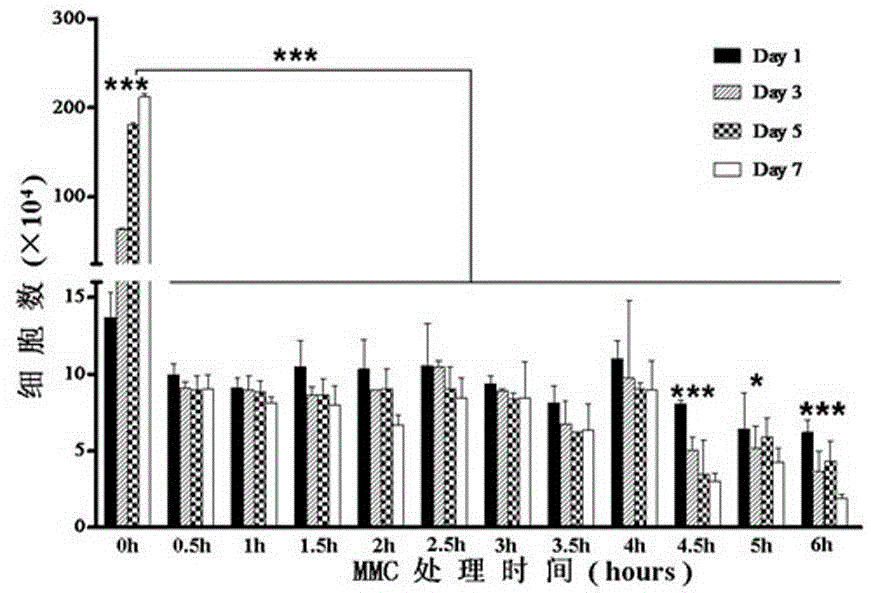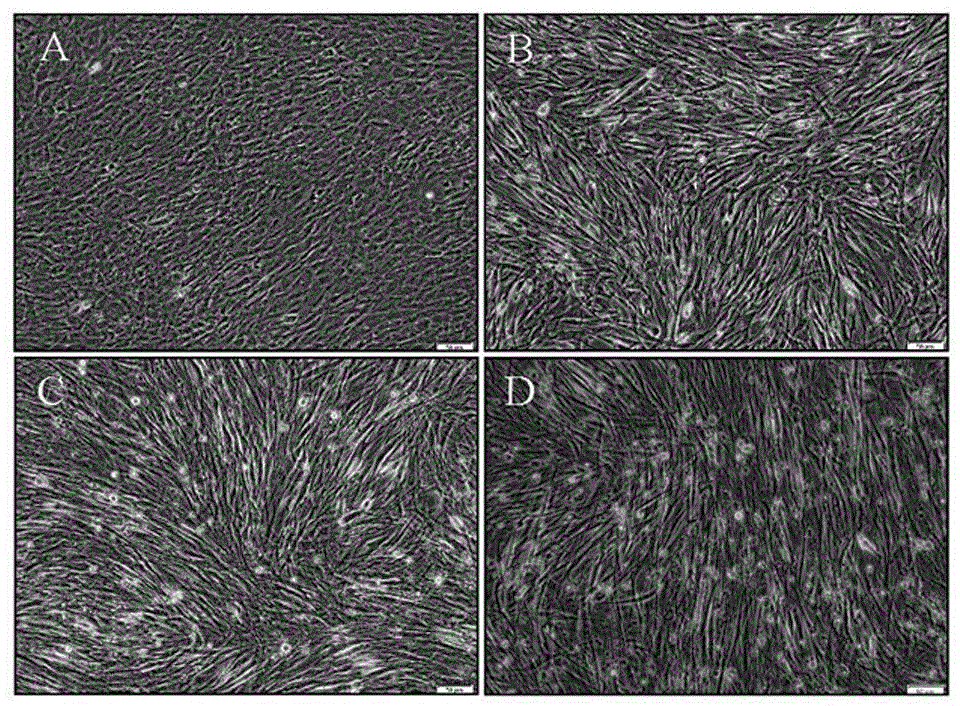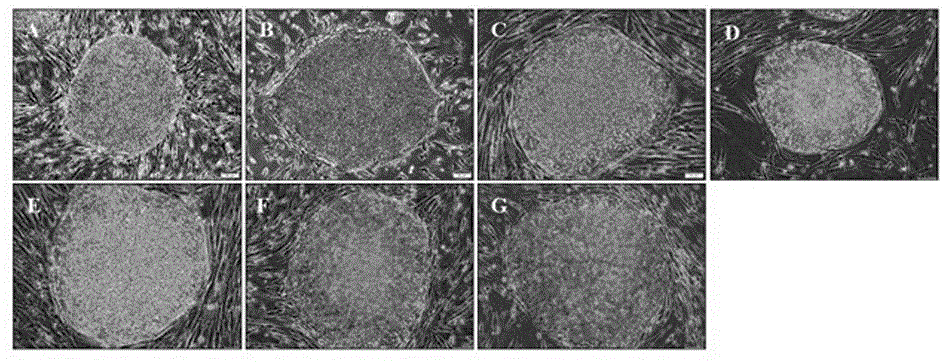Method for preparing feeder layer cells by suspension-adhesion method
A technology of feeder cells and adherent cells, which is applied in the field of in vitro cell culture, can solve the problems of insufficient inhibition of cell mitosis, low quality of feeder, and difficulty in grasping the optimal processing time, so as to improve the efficiency of mitosis and make the preparation time flexible and convenient , Fast wall-attachment effect
- Summary
- Abstract
- Description
- Claims
- Application Information
AI Technical Summary
Problems solved by technology
Method used
Image
Examples
Embodiment 1
[0048] A method for preparing feeder cells by a suspension-adherence method, comprising the following steps:
[0049] (1) CF-1 MEFs primary (P0) acquisition:
[0050] Take a CF-1 mouse at 12.5 days pregnant, kill it by neck dislocation, take out the embryo under aseptic conditions, wash it with 10ml PBS and put it in a sterile petri dish; remove the head and viscera of the embryo, and wash it twice with 10ml PBS; Transfer the remaining tissue to a new sterile petri dish and cut it into pieces with sterile scissors, add 1ml of digestion solution to each embryo, pipette several times at the same time, put it in 37°C, 5% CO 2 Digest in a cell incubator for 5 minutes; use a culture solution equal to the volume of the digestion solution to terminate the digestion, blow and beat sufficiently to separate as single cells as possible; after mixing the above cell suspension, add the cell suspension of 2 embryos to each T75 culture flask and 13ml of culture solution, mix thoroughly and ...
Embodiment 2
[0069] Comparison test of feeder cells prepared by suspension-adherence method and traditional method:
[0070] Traditional methods include the following steps:
[0071] (1) CF-1 MEFs primary (P0) acquisition:
[0072]Take a CF-1 mouse at 12.5 days pregnant, kill it by neck dislocation, take out the embryo under aseptic conditions, wash it with 10ml PBS and put it in a sterile petri dish; remove the head and viscera of the embryo, and wash it twice with 10ml PBS; Transfer the remaining tissue to a new sterile petri dish and cut it into pieces with sterile scissors, add 1ml of digestion solution to each embryo, pipette several times at the same time, put it in 37°C, 5% CO 2 Digest in a cell incubator for 5 minutes; use a culture solution equal to the volume of the digestion solution to terminate the digestion, blow and beat sufficiently to separate as single cells as possible; after mixing the above cell suspension, add the cell suspension of 2 embryos to each T75 culture flas...
PUM
 Login to View More
Login to View More Abstract
Description
Claims
Application Information
 Login to View More
Login to View More - R&D
- Intellectual Property
- Life Sciences
- Materials
- Tech Scout
- Unparalleled Data Quality
- Higher Quality Content
- 60% Fewer Hallucinations
Browse by: Latest US Patents, China's latest patents, Technical Efficacy Thesaurus, Application Domain, Technology Topic, Popular Technical Reports.
© 2025 PatSnap. All rights reserved.Legal|Privacy policy|Modern Slavery Act Transparency Statement|Sitemap|About US| Contact US: help@patsnap.com



